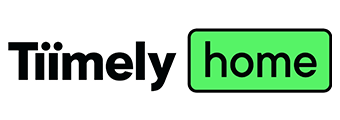What is a non-bank lender?
Non-bank lenders are entities that can provide loans without also providing other types of banking business. Thus, you won’t find a non-bank lender offering savings accounts or traditional offset accounts, even if it wanted to.
That’s because a non-bank lender isn’t an authorised deposit-taking institution (ADI). To become an ADI, a financial institution needs to be licensed by APRA. That also means they operate on a slightly different business and regulation model, which could come at a slight advantage.
“Non-bank lenders outshine traditional banks with our agility, quick decision-making, and personal service,” said Marie Mortimer, managing director of non-bank lender loans.com.au (pictured below).
“Operating with less bureaucracy than ADIs, we offer faster approvals and technological innovation. This makes us a nimble and hassle-free alternative for people seeking quick and personalised service.”

In the interests of full disclosure, InfoChoice and loans.com.au are both associates of the Firstmac Group.
Non-bank lenders make up around 5% of Australia’s financial system, according to the Reserve Bank of Australia (RBA). While that’s a small slice of a huge cake, it's enough to keep the big banks on their toes and ensure competition in the nation’s lending market.
There are a few different types of non-bank lenders. If you’re considering signing up to a home loan through one, you’re likely looking at a registered financial corporation (RFC). They generally provide home and car loans, and sometimes offer loans to businesses and commercial property developers.
Where do non-bank lenders get their money from?
One commonly asked question regarding non-bank lenders concerns how they get their money. After all, the business model of a bank typically sees it collect deposits from savers and hand the cash out to borrowers, paying interest to depositors and charging borrowers interest.
Of course, non-banks can’t do that. Instead, they generally turn to the wholesale funding market or, more commonly, securitisation.
While it might sound complicated, securitisation is actually simple to understand. It sees a non-bank lender pool debts like mortgages or car loans together and sell them on to institutional investors. Interestingly, many of those institutional investors typically end up being banks – both domestically and overseas.
Are non-bank lenders safe?
Non-bank lenders are as safe as houses – or at least as safe as other Aussie mortgage providers. While they aren’t an ADI or bank, they still need to comply with other consumer protection laws.
“Non-bank lenders operate in a tightly regulated environment, where we comply with the National Consumer Credit Protection Act, which is enforced by ASIC,” Ms Mortimer said.
“There is no reason to feel safer with a bank than a non-bank. But don't just take our word for it.
“Since 2011, we've written more than 40,000 loans and have happy customers in every state and territory in Australia.”
In saying that however, non-bank lenders – just like banks – can go bust. While the chances of a lender going bust is low, it's not unheard of. Just take the Global Financial Crisis (GFC) for example, wherein a series of unfortunate (and irresponsible) events led to a spate of bank collapses.
If a non-bank collapse were to happen, chances are your mortgage won’t simply be wiped from the table. It’s far more likely it will be sold to another lender – you mightn’t even notice a difference! The most recent case - while it wasn’t a collapse - was Nano in 2022, when its mortgage book was acquired by AMP.
If a bank were to go bust, on the other hand, the Financial Claims Scheme ensures depositors get up to $250,000 of their money back.
Australia’s largest non-bank lenders
There’s no shortage of non-bank lenders operating in Australia.
Some of the market’s biggest non-bank lenders include:
-
Firstmac and its retail brand loans.com.au
-
Resimac and its retail brand homeloans.com.au
Other non-bank lenders include Yard, WLTH, Redzed, Homestar Finance, Freedom Lend, and Reduce Home Loans.
Firstmac & loans.com.au
Firstmac is Australia’s largest family-owned lending business, boasting a Brisbane call centre and OnTrack - its award-winning online application portal.
Unlike non-bank lenders that aim to sign loans deemed by banks to be too risky, loans.com.au takes them on at their own game. Its focus is on prime home loans.
Resimac & homeloans.com.au
Resimac is listed on the ASX, meaning it's a publicly owned company. It dates back to 1985 and was one of the pioneers of non-bank lending.
It aims to provide flexible and competitive home loans through its alternative lending structure.
Pepper Money
Another ASX-listed non-bank lender, Pepper Money was born in 2000. Pepper Money promises to consider applicants with various credit scores and income sources, thereby potentially providing home loans to borrowers who may otherwise struggle to get approval from a bank.
Liberty
Liberty promises ‘out-of-the-box’ lending solutions to Australians who otherwise mightn’t be able to secure a competitive loan product.
How do non-bank lender home loans compare to other lenders'?
The question of whether non-banks offer more competitive home loans than traditional banks depends on a variety of factors such as whether you’re an owner occupier or investor, your deposit/equity size, if your home has ‘green’ features, and if you’re paying P&I or interest only.
While one borrower might spot a good deal through a non-bank lender, another might find their perfect home loan fit at a bank. The chart above can shed some light on the rates available on home loans provided by a non-bank lender at the time of writing.
Flexibility on serviceability buffer
As per APRA regulations, banks must ensure a borrower can afford repayments if interest rates were to go up by 3% from the time they apply. Non-banks aren’t subject to this rule, but are governed by ASIC and tend to apply their own buffers.
The serviceability buffer means a person applying for a home loan with a 6% interest rate through a bank would need to prove they could afford to make the repayments if the interest rate increased to 9%. While this is a ‘recommendation’ from APRA - banks aren’t required to use it - home loans that aren’t subject to the buffer make up a tiny pool of the market, and are granted by exception.
That means traditional financial institutions have turned away many hopeful homeowners in the wake of the RBA’s latest rate hiking spree, demanding they purchase a cheaper home or bring in a larger deposit. Fortunately, that’s not always the case for those applying for a home loan through a non-bank lender, who can provide flexibility from the outset.
Banks vs non-bank lenders: Pros & cons
Like with any bank or lender, there are benefits and drawbacks to signing up for a home loan from a non-bank lender. Here are a few worth considering:
Pros
- Non-bank lenders can offer below-market rates and fees
-
They can offer faster and more personalised service
-
They often lend to applicants who might not meet banks’ requirements
-
They’re generally just as safe as any other bank or lender
Cons
- They can’t take deposits, meaning a borrower will need to do their banking elsewhere
-
They also can’t offer certain features like offset accounts, though most still offer redraw facilities
-
They mightn’t offer as many home loan options as a larger bank does








